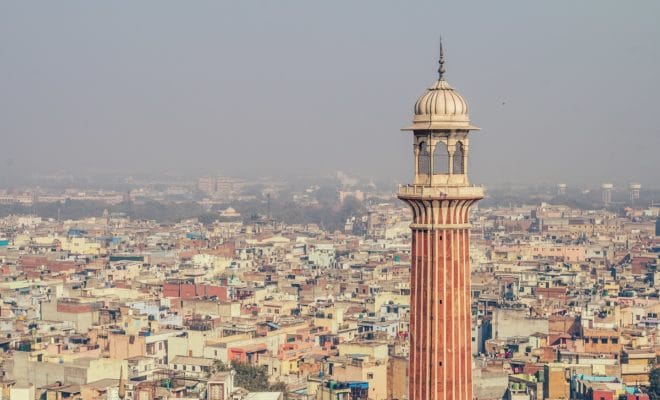India
Air Pollution Reducing Average Indian’s Life by 4 Years: Study

Picture Courtesy: Bigstock
India is world's second most polluted country after Nepal, the Energy Policy Institute at the University of Chicago (EPIC) said.
After Nepal, India is now the second most polluted country in the world, according to a new study by the University of Chicago.
The study on Air Quality Life Index reveals that “Particulate pollution is so severe that it shortens the average Indian’s life expectancy by more than four years relative to what it would be if World Health Organization (WHO) air quality guidelines were met.”
According to an India Today report, Delhi and Kolkata are the two most polluted cities in India. The AQLI report says that the quality of air in Delhi is among the deadliest in the country. Pollution concentrations there averaged 113 micrograms per cubic meter in 2016, reducing life expectancy by more than 10 years for a typical resident.
It says, in 1998, “Delhi and the north Indian states of Uttar Pradesh, Haryana, and Bihar already suffered from particulate concentrations that exceeded WHO safe levels by factors of 3 to 6 and reduced life expectancy for residents thereby between 2 and 5 years. Over the ensuing two decades, pollution in these regions increased to as much as 10 times the WHO safe limit in the case of Uttar Pradesh, where air pollution levels now reduce life expectancy by 8.6 years.”
#Over the past two decades,particulate pollution increased by 69% across #India.Today,the average Indian would live 4.3 years longer if their country met the @WHO guideline. People in #Delhi would live more than 10 years longer
Explore @UChiEnergy’s #AQLI– https://t.co/AKldr8M438 pic.twitter.com/UbTqD7uRq5— UChicago EPIC India (@EPIC_India) November 19, 2018
A daily Air Quality Index which monitors the day-to-day air quality globally showed that Kolkata has surpassed Delhi, turning into the most polluted metropolitan city in the last 72 hours, India Today reported.
Michael Greenstone, Director, Energy Policy Institute at the University of Chicago (EPIC) and The Milton Friedman Professor in Economics said, “High levels of air pollution are a part of people’s lives in India, just as they were in the United States, the United Kingdom, Japan, and other countries in the past. The last several decades have seen tremendous progress in many of these countries, but this progress did not happen by accident—it was the result of policy choices. As India navigates the dual challenges of sustaining economic growth and protecting environmental quality, the AQLI provides a tool to make the benefits of policies to reduce air pollution concrete.”
The AQLI has been instrumental in establishing particulate pollution as the single greatest threat to human health globally with its effect on life expectancy exceeding that of devastating communicable diseases such as tuberculosis and HIV/AIDS, behavioral killers like cigarette smoking, and even war. Critically, the AQLI reports these results in tangible terms that are relatable for most people.
About AQLI, Greenstone said, “My colleagues and I developed the AQLI, where the ‘L’ stands for ‘life,’ to address these shortcomings. It takes particulate air pollution concentrations and converts them into perhaps the most important metric that exists—life expectancy.”
The index shows that almost seventy-five percent of the global population, or 5.5 billion people, live in areas where particulate pollution exceeds the WHO guideline. The AQLI also indicates that India and China, which make up 36 percent of the world’s population, account for 73 percent of all years of life lost due to particulate pollution.
On average, people in India would live 4.3 years longer if the country met the WHO guideline—expanding the average life expectancy at birth there from 69 to 73 years.
"You will live at least 10 years less across large parts of north #India because of the #air that you breathe. Think about it!" – concluded @VishnuNDTV as he referred to @UChiEnergy 's #AQLI in his prime-time show in @NDTV last night.
Watch it here – https://t.co/ORgXqr0gDL pic.twitter.com/OyoJar2XYE
— UChicago EPIC India (@EPIC_India) November 21, 2018

You must be logged in to post a comment Login